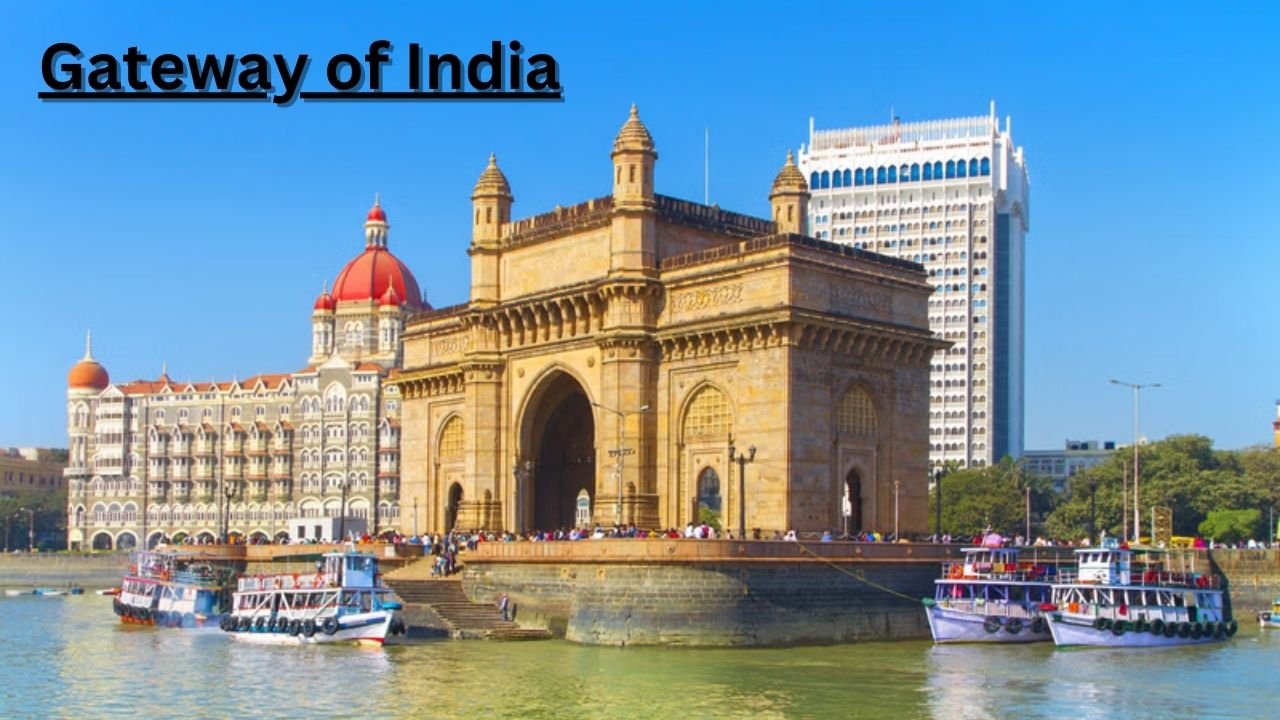The Gateway of India stands as one of the most iconic landmarks in Mumbai, India. This grand arch, overlooking the Arabian Sea, is not just a monumental structure but a symbol of India’s rich colonial history and its subsequent emergence as an independent nation. Built in the early 20th century, this architectural masterpiece has witnessed key historical events and continues to be a major tourist attraction.
Historical Significance of the GOI
Colonial Beginnings
The Gateway of India was constructed to commemorate the visit of King George V and Queen Mary to India in 1911. Although the foundation stone was laid in 1911, the construction was completed in 1924. This was a period marked by the British Raj’s influence over the Indian subcontinent, and the Gateway was designed to serve as a ceremonial entrance to India for viceroys and the new governors.
Architectural Marvel
The Gateway of India is an architectural marvel blending elements of Hindu and Muslim styles, typical of Indo-Saracenic architecture. The arch stands 26 meters high, and the structure is built from yellow basalt and reinforced concrete. The intricate latticework, the pointed arches, and the four turrets at the top reflect the detailed craftsmanship of the time. The monument is also a testament to the collaborative efforts between British architects and Indian workers, reflecting a fusion of Western and Eastern design philosophies.
The Role of the Gateway in Indian Independence
Witness to a New Era
After India gained independence from British rule in 1947, the Gateway of India took on a new symbolic meaning. It was from this very location that the last British troops departed from India in 1948, marking the end of an era and the beginning of a new chapter in Indian history. The Gateway, thus, transformed from being a symbol of colonialism to one of independence and national pride.
A Place of Gatherings and Protests
Over the years, the Gateway of India has also served as a focal point for various political and social gatherings. It has witnessed numerous protests, rallies, and public meetings, reflecting the changing political landscape of India. The site has become a place where citizens come together to voice their opinions, celebrate victories, and express their solidarity on various issues.
The Cultural Impact of the Gateway of India
Tourism and Popular Culture
The Gateway of India is not just a historical monument; it is a cultural icon. Every year, millions of tourists visit the Gateway, making it one of the most visited tourist attractions in Mumbai. The monument is especially breathtaking during sunrise and sunset when the play of light on its stone structure creates a mesmerizing sight. The area surrounding the Gateway is a bustling hub of activity, with street vendors, photographers, and performers adding to the vibrant atmosphere.
Film and Media
The Gateway of India has also made its mark in popular culture. It has been featured in numerous Bollywood films, TV shows, and documentaries, further cementing its status as a symbol of Mumbai and India as a whole. Its image has become synonymous with the city, often used as a backdrop to represent Mumbai’s unique blend of history, culture, and modernity.
Architectural Details and Restoration Efforts
Design and Construction
The design of the Gateway of India was drafted by the British architect George Wittet. The structure incorporates intricate detailing, with a central dome that is 15 meters in diameter. The Indo-Saracenic style, prevalent in the design, combines elements of Roman triumphal arches with traditional Indian motifs. The yellow basalt used in the construction was sourced locally, adding to the authenticity of the structure.
Preservation and Challenges
Given its historical importance, the Gateway of India has been the focus of various restoration and preservation efforts over the years. The humid coastal environment, along with pollution and the sheer number of visitors, has taken a toll on the monument. Preservationists and architects have worked meticulously to maintain the structure’s integrity, ensuring that it continues to stand as a proud symbol of India’s heritage.
The Gateway of India Today
A Hub of Activity
Today, the Gateway of India is more than just a monument; it is a vibrant part of Mumbai’s daily life. It serves as the starting point for ferries heading to the Elephanta Caves, another UNESCO World Heritage Site. The area around the Gateway is always bustling with activity, from tourists taking photos to locals enjoying a leisurely walk along the promenade.
Cultural and Social Significance
The Gateway continues to play a significant role in the cultural and social life of Mumbai. It is a place where people come to celebrate festivals, observe moments of silence, or simply enjoy the view of the Arabian Sea. The Gateway has also become a symbol of resilience, standing tall through the ups and downs of the city’s history, including the tragic events of 26/11 when terrorists targeted Mumbai.
Conclusion:-
The Gateway of India is not just a relic of the past but a living monument that continues to inspire and attract people from all over the world. Its historical significance, architectural beauty, and cultural impact make it one of the most important landmarks in India. As we look to the future, the Gateway of India will undoubtedly continue to be a symbol of Mumbai’s rich history and its place in the world.
Read our more blogs:-



